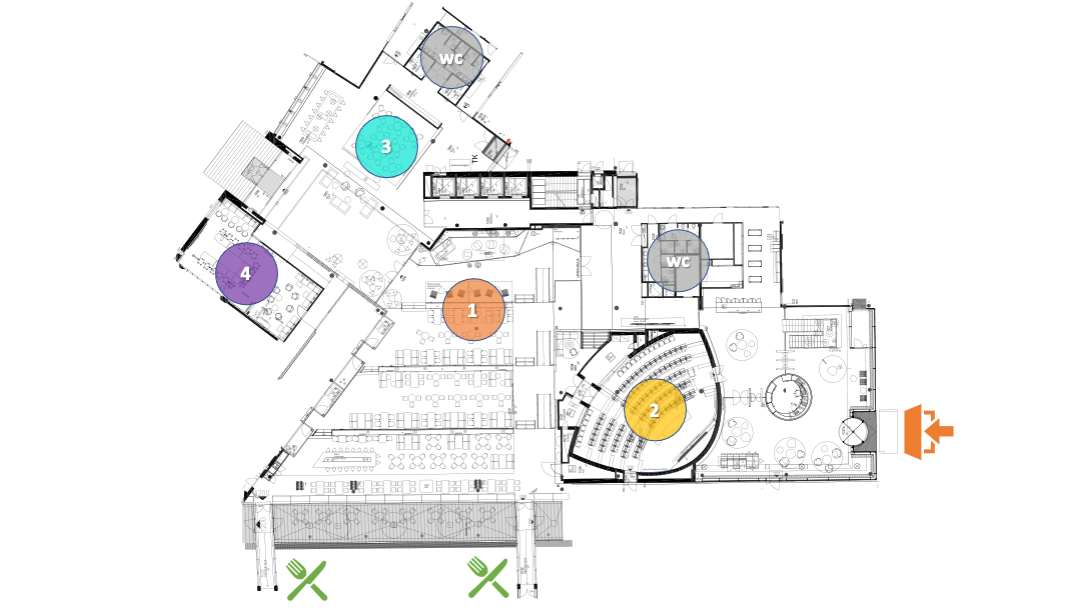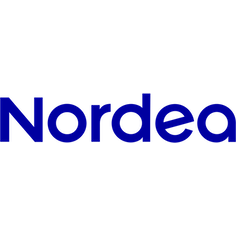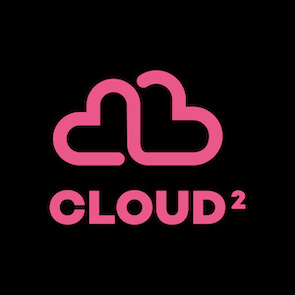Helsinki | Thursday, 20 April 2023
See you next year!
The AWS Community Day Nordics is a free full day event for AWS users to come together to network, learn from each other and get inspired. The event is organized by the community - for the community.
The AWS Community Day Nordics is a cloud education event where participants are able to learn best practices and latest trends for deploying applications on AWS. The event delivers a peer-to-peer learning experience, providing the people with a venue for them to acquire AWS knowledge in their preferred way: from one another.
Speakers are expert AWS users from the community - including AWS User Group leaders, AWS Community Builders, AWS Ambassadors and AWS Heroes - with real life experience in the AWS topics they are presenting.
Date & Venue
This event is being held Thursday, 20 April 2023 in Nordea Vallila Campus (Aleksis Kiven katu 7, 00500 Helsinki).
Venue map
Track 1 - Event lounge (orange)
Track 2 - Auditorium (yellow)
Track 3 - Meeting lounge (teal green)
Track 4 - Workshop (purple)

Agenda
The event hours are 9:00 - 17:30 with registration and coffee starting preliminarily at 8:00. Detailed times and content subject to change. Always check back here for the latest version of the agenda.
Talks & Speakers
All videos can be found on the AWS Community Nordic YouTube Channel
In a large IoT system, with thousands or millions of IoT devices, the load can vary heavily over the day. Data and control messages flow in a rapid and often unpredictable way. This makes these systems a good fit for a serverless and event-driven architecture. In this session we will learn about architecture patterns used, how serverless and event-driven play a central role in the success. We will also look at challenges and lesson learned during development.
Event-Driven Architectures (EDAs) allow complex application landscapes to efficiently integrate. However, an organically grown EDA can be messy. In this talk I will present 10 simple rules to organize and standardize event-driven systems, which will help you build future-proof implementations.
In this talk, I will walk you through building scalable, production-ready data streaming applications using AWS Kinesis Data Streams and AWS Lambda. There will be plenty of tips, best practices and "gotchas" based on firsthand experience building serverless near real-time data streaming architectures. Together we will see how AWS services work and fail, and learn to embrace the failures. Because as Dr. Werner Vogels likes to say: everything fails, all the time.
Using “the cloud” is not a simple on/off switch, in reality it’s a journey; No matter if your organization is just starting the journey or already far along, this talk will provide you ideas how to "make the cloud work for you". It showcases how approaches like Serverless, Asynchronous & Event-Driven Systems with patterns like Command Query Responsibility Segregation (CQRS) and fully utilizing the AWS feature catalogue can improve your ability to scale, secure your systems, manage cost and overall, better understand the state of your systems. The talk will also describe (and briefly showcase) how proper tooling such as AWS CDK can help. This talk is based on 11+ years of AWS experience in Alma Media – a European digital services & media company – that also has "the magical 5 years of experience" with technologies such as Serverless and AWS Cloud Development Kit (CDK).
More and more companies are adopting serverless technologies as the community is defining the best practices, tools, and patterns. Companies using Terraform as their infrastructure as a code tool are often required to reinvent the wheel when they work with serverless. In the talk, I will explain why managing serverless applications with Terraform is a good idea and how https://serverless.tf open-source project has started as an organic response to the accidental complexity of many existing tools used by serverless developers. I will demo a complete serverless application (including building and deploying it) using Terraform and open-source components.
How do attackers target AWS workloads? What security controls really matter, what should you prioritize and what can be left for later? Using his experience assessing the security of a wide range of organizations, Nick will talk through the most common attack scenarios in cloud-native environments, and the most critical security controls to have in place. This will consider not only the workloads themselves, but also supporting systems such as CI/CD platforms and authentication brokers. Attendees will come away with a clearer understanding of the real-world security threats to their AWS workloads, and actionable advice on what to prioritize to make sure their data and applications remain secure.
MIs your data safe and recoverable after a virus, a fire or just plain-old-code-gone-wrong drop tables your database? Every customer-facing production system should be thinking about risks the system is facing. Here are some thoughts collected after running two simulations in AWS to make sure a system can recover.
Findy Agency (https://findy-network.github.io/) is a decentralized identity agency following a microservice architecture. The agency's fully open-sourced deployment pipeline utilizes AWS CDK and GitHub tooling to offload the deployment worries from the small team. Laura Vuorenoja from OP Lab has researched the area of self-sovereign and decentralized identity hands-on for several years. Together with her team, they have developed a unique solution for applications and individuals to utilize verifiable credentials. The project includes batteries; it provides even the deployment scripts as open-source. In this session, Laura will summarize her journey in building a continuous deployment pipeline with native AWS tools. She will present an overview of the project architecture and the anatomy of their project's current CDK pipeline.
You’ve been hearing a lot about security best practices, but you’re not convinced they can really make a difference? Do you think your resources are safe only because nobody would notice your random IP address? If so – join my session! I’ll show you real-life attack scenarios to convince you that misconfigurations can have dire consequences.
You are woken in the middle of the night by your phone. The database has crashed and we just lost all customer data. Morning comes around and it's time for a dreaded post-mortem. Long story short, it's Human Error. The intern broke it. When we have an incident we should always strive to learn from it. Pointing the finger at individuals doesn't solve the underlying problem and people won't feel comfortable speaking up if they don't feel safe. In this session we will talk about how we as an organisation can utilise Blameless to create a psychologically safe environment for our employees as well as build a culture where we learn from incidents.
With the latest release in the statistics on the CNCF projects, it is pretty obvious that OpenTelemetry is the recent trend in the developer community. It involves following standards about how to enable a single pane of glass to allow for visualizing traces, metrics, and logs as well as standardizing the practice of shipping telemetric data in the world of decentralized micro-service architectures. This Session will be focused on the OpenTelemetry features and how we adopt them in the AWS ecosystem to embed the practice in the workloads as composed configurable components.
Firstbeat Technologies has analyzed over 100 billion heartbeats and created large datasets that must be re-analyzed when developing and updating algorithms. Running a new version of an analytics algorithm could take up to 4-5 days with the existing solution running on on-premise servers. Instead of a traditional lift-and-shift approach, the team devised a solution that relies on a serverless approach and massive scalability when needed. With the new solution, the team can run analytics jobs in the cloud in less than one hour, costing a few euros per run. Discover how the team used technologies like AWS Glue, AWS Batch, and AWS Step Functions to solve the analytics challenge.
Since the advent of the concept of cloud computing, developers and DevOps people have tried various methods to manage cloud infrastructure. Infrastructure as Code has become the primary method in this regard with its repeatable and reliable structure. However, the increasingly difficult and fragmented nature of the cloud cause more IaC code written on Terraform, Pulumi or CloudFormation than just the code developed for a product's real value to its users. Developers spend more time deciding for the appropriate architecture and configuring it than the business logic. Infrastructure FROM Code aims to make cloud application development absurdly easy by coming up with a new solution to eliminate this problem. In this short talk, I will talk about the birth of Infrastructure FROM Code, its state as of 2023 and where it can(and can't) be used in the future.
In this talk it is presented ways and reasons why cost optimisation is needed regularly. Usually rightsizing and autoscaling of environments is not enough. One need to do refactoring of architecture. Cost optimisation also relates to Sustainability in the cloud.
While redeploying an AWS Lambda, we found an interesting way to DDoS and bring down an entire system, despite external traffic being perfectly normal. I explain how it is possible and what can be done to avoid similar situations.
Barona has successfully constructed a common API using AWS API Gateway and Lambda endpoints. This has allowed Barona to unify multiple APIs into one and integrate microservices and SaaS software into a single API for developers. The business goal of simplifying architecture, enabling better monitoring, and providing unified access control has been achieved. In this session, we will explain the iterations of the solution from its initial SAM and CDK setup to its current SST based setup.
AWS StepFunctions is a powerful serverless workflow orchestrator that lets us design and run low-code state machines. They can, however, be quite time consuming to create In this demo I will showcase two open-source tools that help StepFunctions builders spend a lot less time composing ASL and instead focus on the problem they want to solve. One of them sets up a real-time sync between StepFunctions Worfklow Studio and your local file system and the other keeps a real time sync between your local machine and AWS. Previous experience of StepFunctions, CloudFormation/SAM and Workflow Studio is recommended.
Given the increasing amount of cyberattacks in the world and prior release of services such as Microsoft Sentinel, there’s lots of activity in the security domain. If you wish to protect your AWS Organization using AWS native or third party tools, all these services produce data in different formats which makes any security automation and incident response potentially inefficient, expensive and cumbersome. In this talk, the listener will be introduced to the new AWS service in preview – Amazon Security Lake – a new service empowering your AWS organization with an all-around capability to manage all the security data in one centralized data lake according to a standard adopted in the cybersecurity industry.
There are many challenges and implications in enterprise public cloud management. The approach that worked for decades regarding on-premises datacenters and IT does not scale when it comes to public cloud operations. The increased technology complexity combined with a faster pace world that is accelerating it’s digital transformation needs cloud operations to be revised. In this talk, we are going to explore how cloud platforms evolved in an enterprise setting. I will share some real-world experiences, war stories and best practices to accelerate and enable a digital innovation culture in enterprises.
At Qred, the challenge of giving elevated AWS access to developers for a limited amount of time is being addressed with the Common Fate open source project, which grants access in a secure, auditable & smooth way. Common Fate is being utilized in conjunction with AWS Identity Center and AWS Control Tower, allowing the CloudOps team to address some edge cases in which developers would normally be denied AWS access. This is achieved by approving requests for extended AWS permissions for a limited time and in an auditable manner.
I want to share how we at Qred use AWS service catalog and IaC to Standardise Data Scientist Development environment. We at Qred want our Data Scientist to focus on our ML modelling and not have to worry about AWS infrastructure and deployment pipelines. We create Sagemaker products in AWS Service catalog to make it easy to start a new project in Sagermaker studio. With one click from our Data Scientist they could create a complete new ML project with a Github repo injected with content like: 1. Github actions workflows, 2. Sagemaker pipeline, 3. S3 buckets, 4. Step function orchestrator lambdas, 5. Schedule retraining of models. Things that a Data Scientist wants to have before starting their data model development. This method could be used in other areas as well if you want to create blueprint projects in your organizations.
The Finnish parliamentary elections culminated in the vote counting on election night, with hundreds of thousands of visitors flocking to media websites. In this session, we’ll explore how MTV and Cirit Oy addressed data processing challenges in election results web application (https://www.mtvuutiset.fi/vaalitulokset). We’ll discuss the problem-solving approach, the use of AWS managed services as well as the achieved results, including a 50% improvement in data processing speed. Attendees will learn about practical solutions in leveraging AWS services for data processing, as well as areas for future improvements and optimization.
Workshop
In this workshop, Marcia Villalba, Principal Developer Advocate at AWS, will guide you through the Serverlessespresso workshop.
Serverlesspresso is a pop-up coffee shop that provideres premium espresso drinks at conferences and events. You will build a serverless application to help the shop to accept orders and notify customers when their drinks are ready. Have fun and get caffeinated!
Note! You will need your own laptop with you in order to participate in the workshop. Workshop is walk-in and continuously available after lunch break. If the room is full, come again after a short while to check if there is space available. We can fit around 30 people at one time in the workshop space. Completing the workshop takes usually few hours.
Sponsors
We want to thank our sponsors, who are making this event possible for everyone! Our sponsors this year are the following:
Contact & Organizers
For sponsorship enquires, feedback or any general question, please send an email to info@awscommunitynordics.org.
Main Organizers
Rolf Koski - VP of Technology at Knowit
Lezgin Bakircioglu - CTO at Qred
Antonio Lagrotteria - Principal Architect at Nordea
Supporting Organizers
Anders Björnestad
Marcus Bladh
Jimmy Dahlqvist
Anurag Kale
Harri Lakkala
Pekka Malmirae
Aki Ristkari
Arne Solheim
Previous events
Previous AWS Community Day Nordics events





